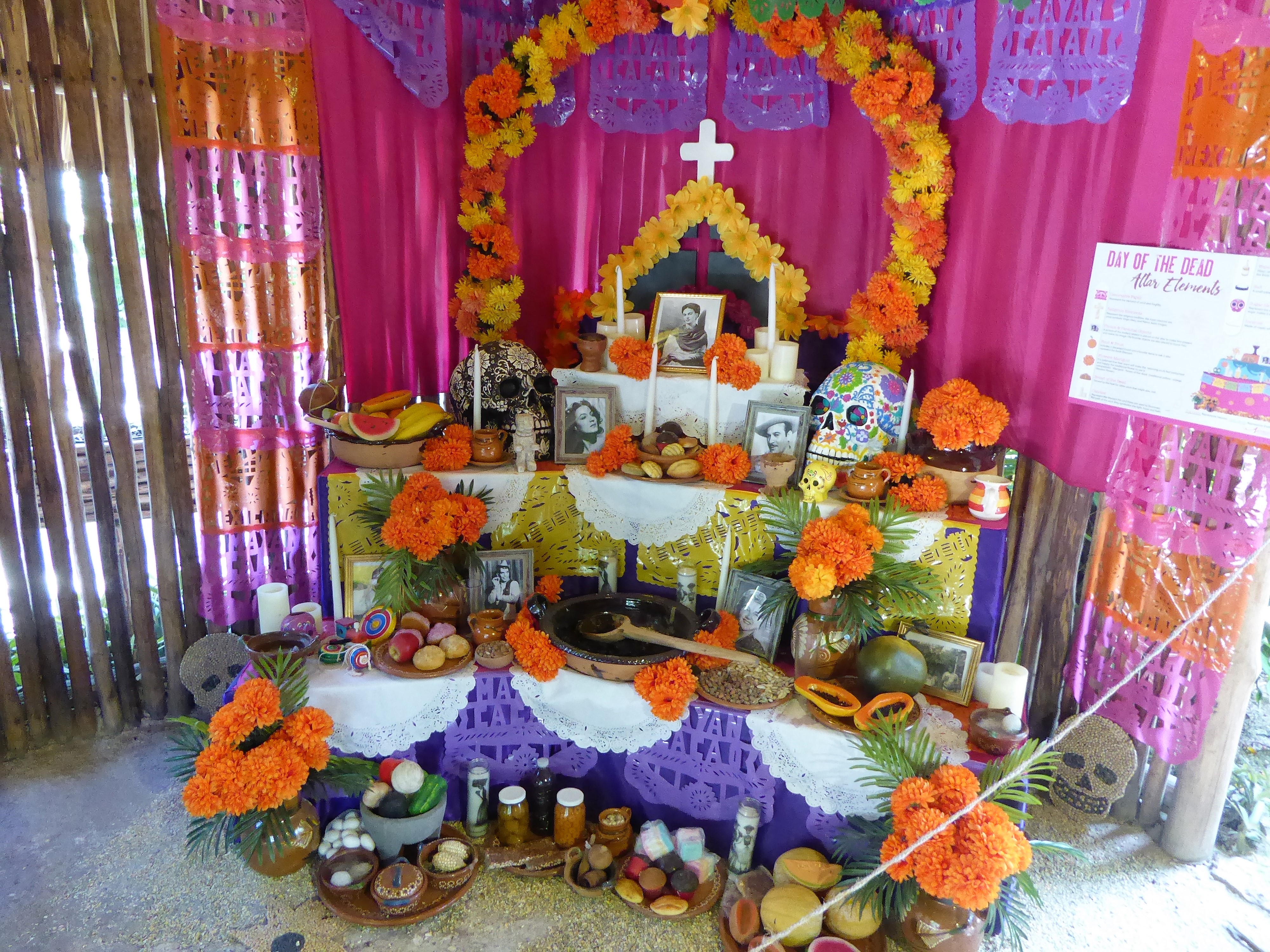

This flower, used since ancient times for its medicinal properties, brings a unique color to the shrine that makes the spirits feel joyful and peaceful. It grows plentifully at this time of year in Mexico and its pungent odor is said to attract the spirits who come to visit their mortal loved ones on this day. (“Flor de Muerto”): Is a flower used in Day of the Dead altars and to decorate graves. With more elaborate ofrendas, you can find up to seven levels. The most common ones have three levels, which represent heaven, earth, and the underworld.

In some regions, you can find a flat surface with all the elements on it, while in others you can find several levels. Every state in Mexico has its own particular way of setting up their ofrendas. Candles are often left in the form of a cross to represent the cardinal directions, so the spirits can find their way. Earth is represented by food, especially bread. Papel picado, or traditional paper banners, represent the wind. Water is left in a pitcher so the spirits can quench their thirst. Every ofrenda also includes the four elements: water, wind, earth and fire. Many people make altars or “ofrendas” (offerings) in their homes to honor their loved ones who have died. From Monarch Butterflies to native Copalli incense to Cempasúchitl – learn about many of the imagery, symbols, and traditions… Some traditions are rooted in ancient meso-American traditions, some came from Spanish/European cultural traditions, and some have evolved over the 3,000+ years of celebrations. Every detail represents something significant and special in the remembrance of loved ones. 1.The Dia de los Muertos holiday is filled with beautiful symbols, traditions, and imagery. According to Remezcla, toys are common for children, who are celebrated on Nov. They stand in to make a loved one feel at home and comfortable. Personal Objects - These objects define a loved one and can range anywhere from a piece of clothing to a favorite hobby.Sugar Skulls - Typically decorated with flowers and other designs, sugar skulls represent death and the sweetness of life.Other drinks and food can vary depending on what ancestors enjoyed. Drinks and Food - Water is a must because it not only quenches the soul's thirst, but it represents purity of the soul and the source of life.Yellow paper symbolizes life, purple stands in for death and orange serves as the union between life and death, according to Remezcla. Papel Picado - The thin sheet of colorful paper typically designed with skeletons, animals and pumpkins represents the wind, because when loved ones arrive, the paper will move and thus alert the host to their presence.It is believed that the rising smoke takes the prayer to the gods and serves as an offering to the gods to cleanse the air and allow spirits to enter without difficulty. Copal Incense - The incense represents praise and prayer.Typically white candles are used, but purple can also stand in to symbolize grief. Candles - The flames of the candles symbolize hope and faith, and they light the way to help the souls find their way to the altar.According to Remezcla, it signals the generosity of the host and feeds the dead after a long, weary journey. Its criss-cross shape represents bones and the single tear shape stands in for sorrow. Pan de Muerto - or Bread of the Dead, is a sweet bread baked and offered as a type of ofrenda that is part of an altar.Their strong scent creates an aromatic ambiance, and they are believed to attract the souls of the dead. Marigolds - Known for their medicinal properties and used to decorate graves, the golden yellow or copper brown color of marigolds represents the sun.


 0 kommentar(er)
0 kommentar(er)
